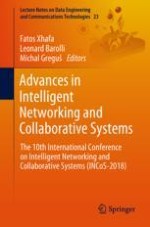This book provides the latest research findings, and discusses, from both theoretical and practical perspectives, innovative research methods and development techniques related to intelligent social networks and collaborative systems, intelligent networking systems, mobile collaborative systems and secure intelligent cloud systems. It also presents the synergies among various paradigms in such a multi-disciplinary field of intelligent collaborative systems.
With the rapid development of the Internet, we are experiencing a shift from the traditional sharing of information and applications as the main purpose of the Web to an emergent paradigm, which locates people at the very centre of networks and exploits the value of individuals’ connections, relations and collaboration. Social networks are also playing a major role in the dynamics and structure of intelligent Web-based networking and collaborative systems.
Virtual campuses, virtual communities and organizations strongly leverage intelligent networking and collaborative systems by means of a great variety of formal and informal electronic relations, such as business-to-business, peer-to-peer and various types of online collaborative learning interactions, including the emerging e-learning systems. This has resulted in entangled systems that need to be managed efficiently and autonomously. In addition, the latest, powerful technologies based on grid and wireless infrastructure as well as cloud computing are currently enhancing collaborative and networking applications significantly, but are also facing new issues and challenges. The principal purpose of the research and development community is to stimulate research that will lead to the creation of responsive environments for networking and, in the longer term, the development of adaptive, secure, mobile, and intuitive intelligent systems for collaborative work and learning.
